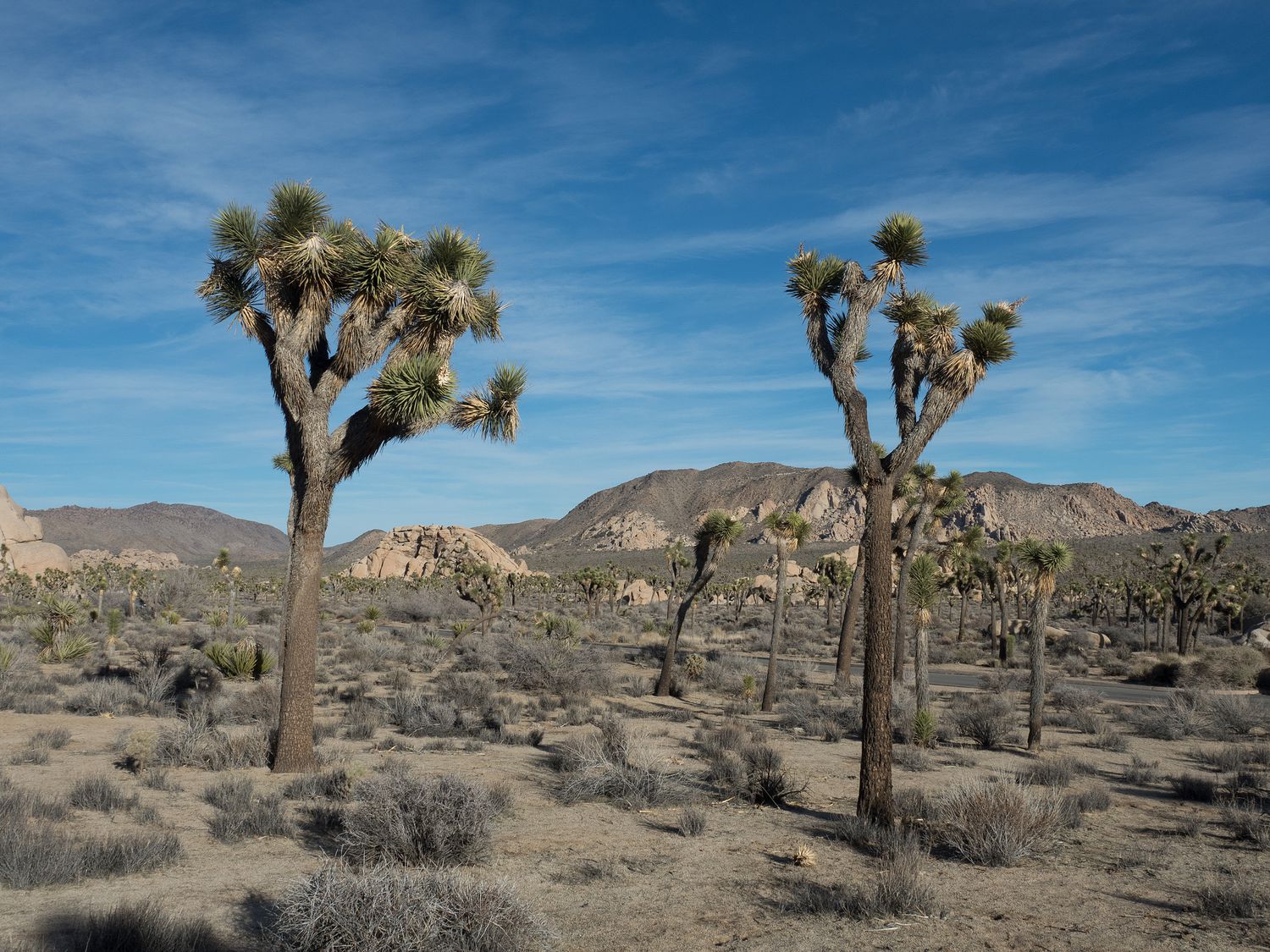– Primm, Nevada to Indio, California –
There’s really nowhere to run in Primm, Nevada. In fact, there’s not a lot in Primm Nevada at all. Aside from lots of solar energy, a water treatment plant, casinos, a handful or restaurants, and a gas station, there’s really nothing here. The whole area encompasses maybe a mile and a half square, including the sea of solar panels they use to power the place. Oh, I almost forgot. There’s also a huge outlet mall here.
It’s funny that I nearly forgot, since we actually got our exercise by making laps around the thing. We were vaguely tempted by the Williams-Sonoma Outlet, but that’s all. Mark and I both hate shopping for clothes, which made up most of the rest of the shops. It’s a pretty big outlet mall, and only an hour from Vegas, so it’s a good stop for people driving through, I guess.
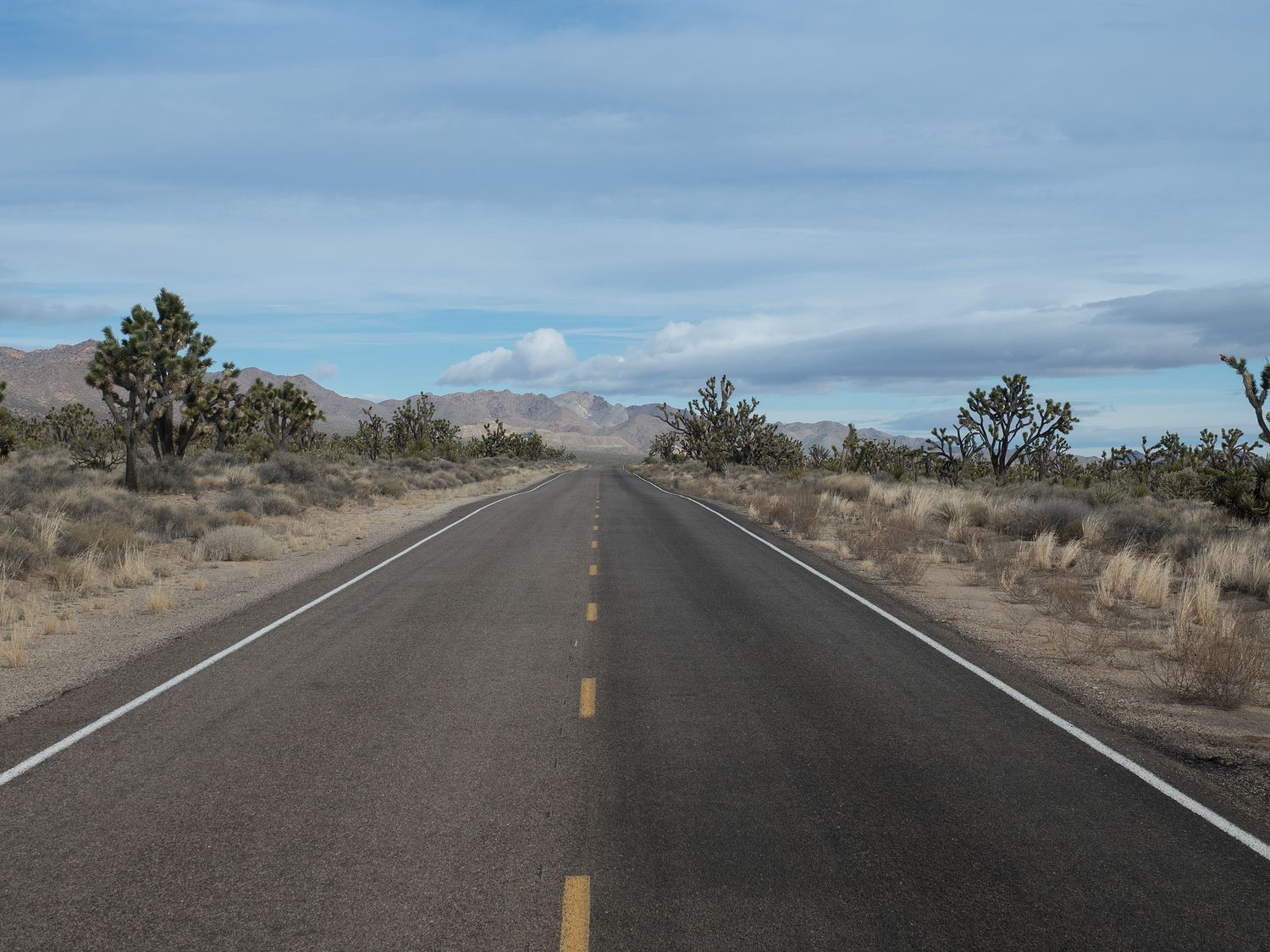
Regardless of its convenience, everything here is more expensive than it ought to be. For breakfast, Mark and I bought yogurt, juices, a granola bar, some Chex mix, and a can of Pringles for later today for an exorbitant $27. Our coffee and tea from the Starbucks in the gas station were also nearly $10 instead of the normal $6-7. What a joke. I was glad to be out of there.
We stayed in Primm specifically for its access to the Mojave National Preserve, which none of us have ever visited before. We weren’t expecting too much, but we were pleasantly surprised. As we drove in, the roads were terrible, and we thought for sure the rest of the park would be the same. Luckily, they actually cleared up a bit, which made it better.
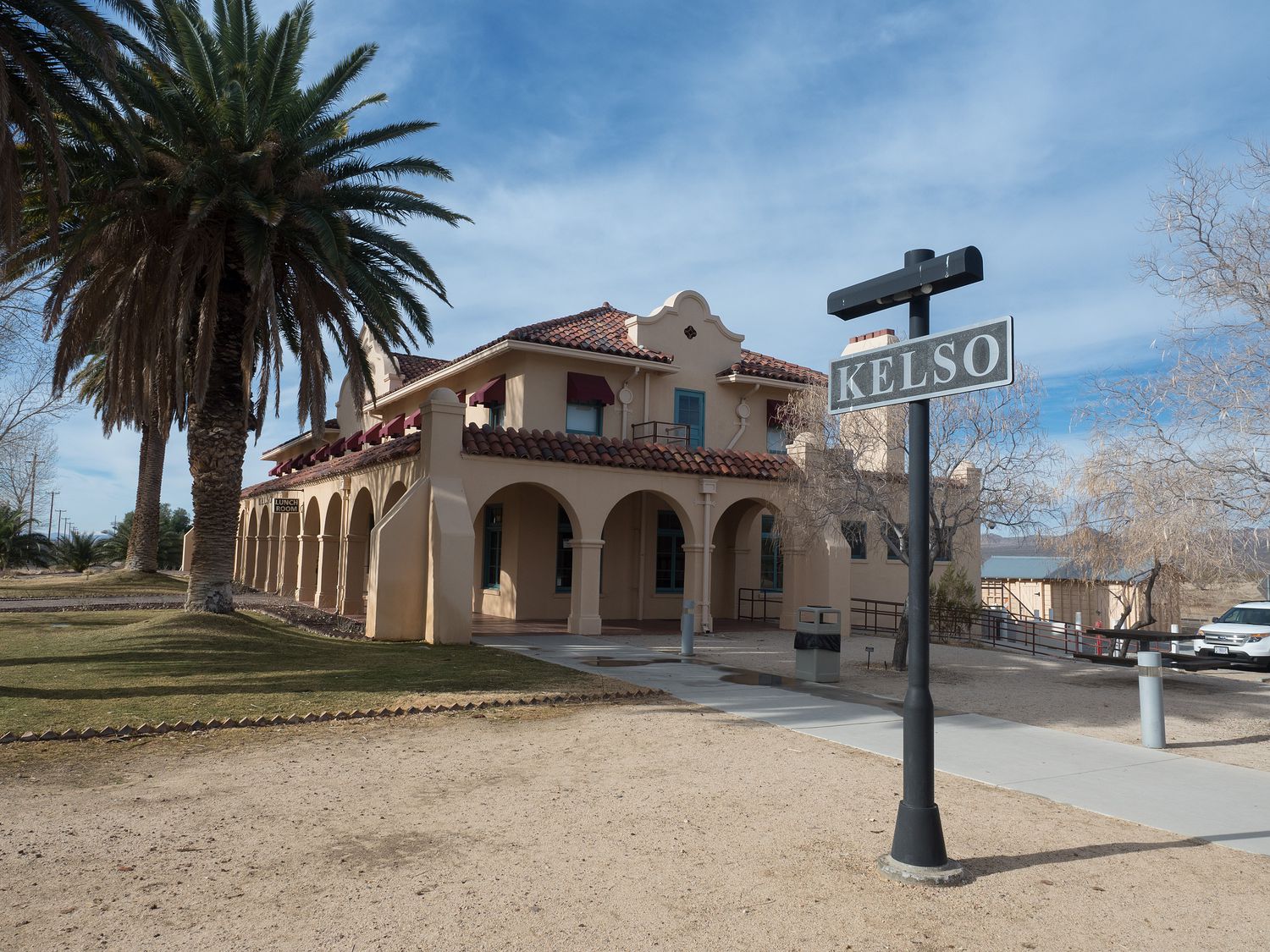
The Mojave National Preserve is huge: 1,600,000 acres. We were expecting some bare desert and some distant mountains, and we did see some of that, but we were genuinely surprised by many of the other things we saw, and we only saw half of the park. A little ways in, we started seeing Joshua trees, which we had no idea existed in the preserve. The forests of them found in the park are the largest in the world. They really are forests, too. It’s cool to see them spreading across the valley along either side of the road.
Since I didn’t know, I’m going to assume that some of my readers don’t know, either. Joshua Trees are a type of yucca, which is native to California, Arizona, Utah, and Nevada, mostly in the Mojave Desert. They can live for hundreds to maybe thousands of years, and grow relatively slowly. They have bark like a normal tree, and they even look like regular trees from a distance.
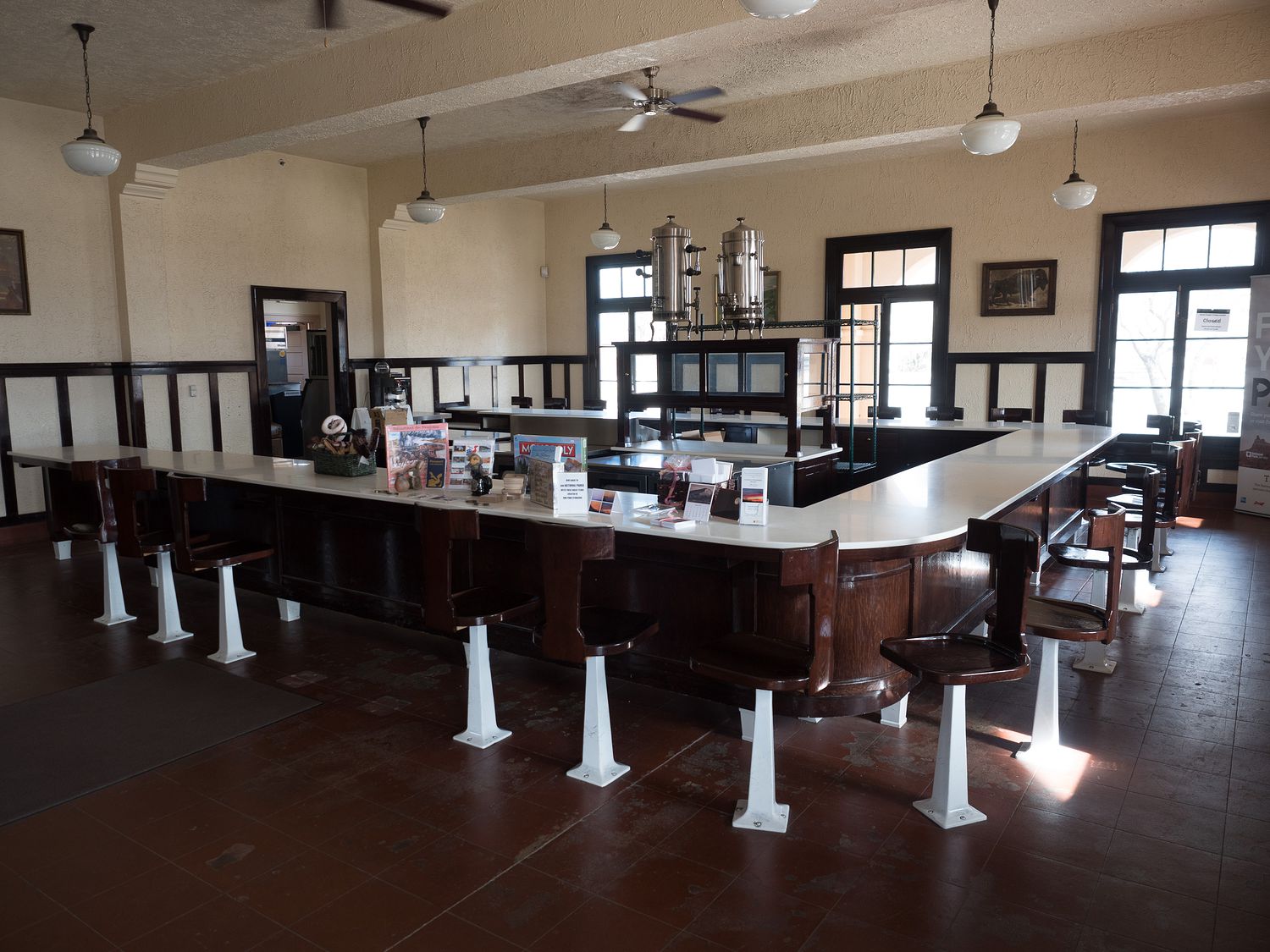
That’s not the only thing in Mojave National Preserve, either. It’s full of ghost towns, sand dunes, 4×4 trails, hiking, camping, volcanic fields, caverns, and mountains. Who knew it had so much stuff? We saw a few ghost towns, several of which didn’t even have any buildings at all. They are along a railroad route, and when the railroad stops ceased, the little towns died. The most prominent of these was once a boomtown with a massive railroad depot. Now, the visitor center for the national preserve resides in the old depot in Kelso.
Kelso is still a ghost town, though it has more activity than the others we saw. The visitor center is neat. It is very much like a museum, with exhibits about the boomtown and display rooms for the way the depot would’ve looked during its heyday. Considering we didn’t expect a visitor center at all, we were pleasantly surprised. We probably spent half an hour cruising through the exhibits. The place was big enough that Mark and I lost each other several times.
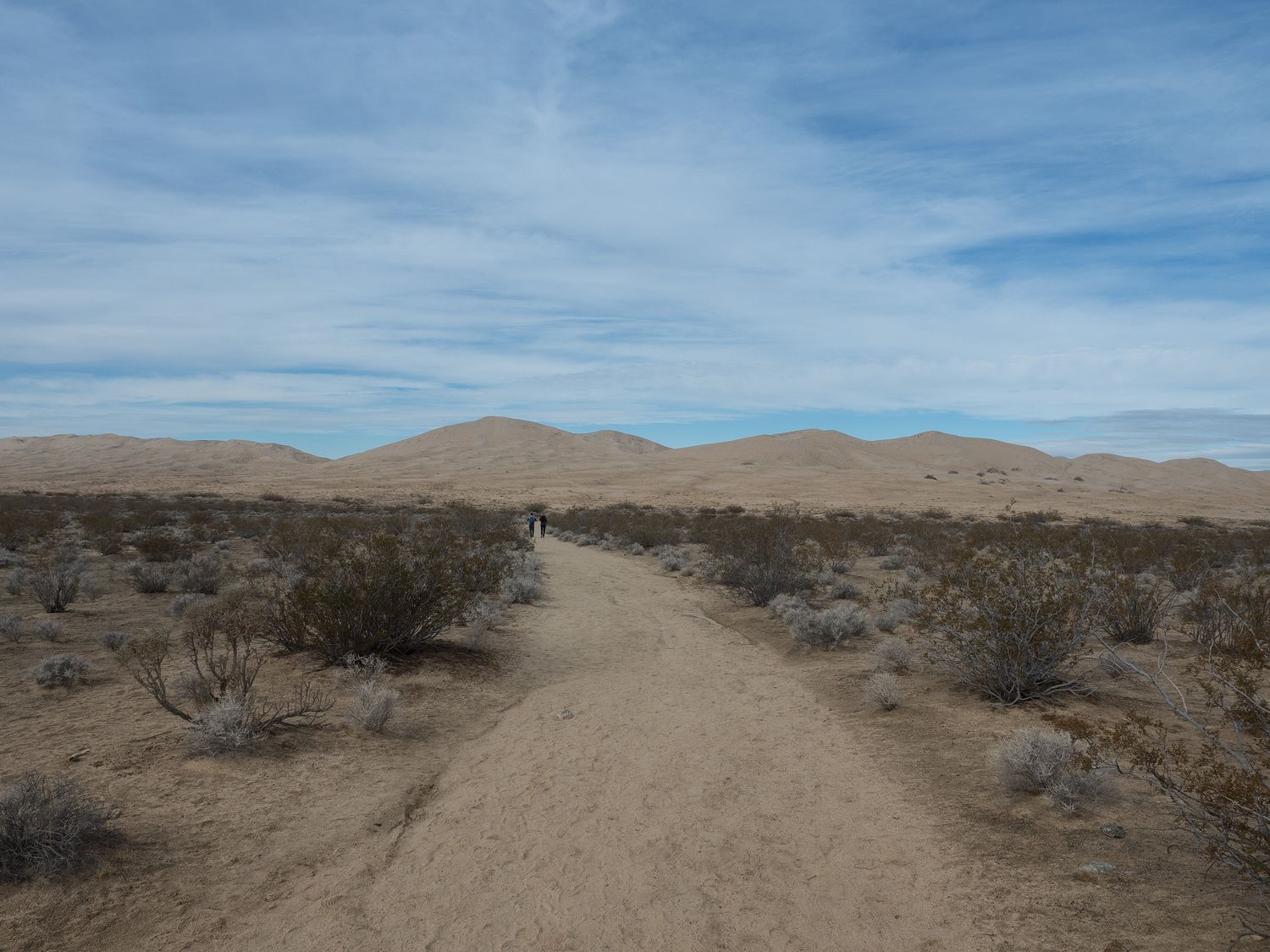
We didn’t have a huge amount of time in the park, so we missed the lava fields and the caverns, which would’ve been fun, but we did get to drive out to the Kelso Sand Dunes. They’re actually pretty impressive, even compared to the ones in Death Valley. The dune field covers 45 miles! Some of the dunes are 650 feet tall. The ones in Death Valley didn’t seem nearly so tall. These looked like small mountains in the distance.
Mark had mentioned, as we approached them form miles away, before we even made it to the visitor center, that he hoped there was a road out to see them. It wasn’t too far, but the road was dirt. At the visitor center, the ranger warned us that the road was rough, but when questioned more closely, she admitted that it just had a few potholes. We laughingly explained that we’d just been in Death Valley, and the road wouldn’t be anything to us, and we were right. The road was so much better than the ones in the larger park.
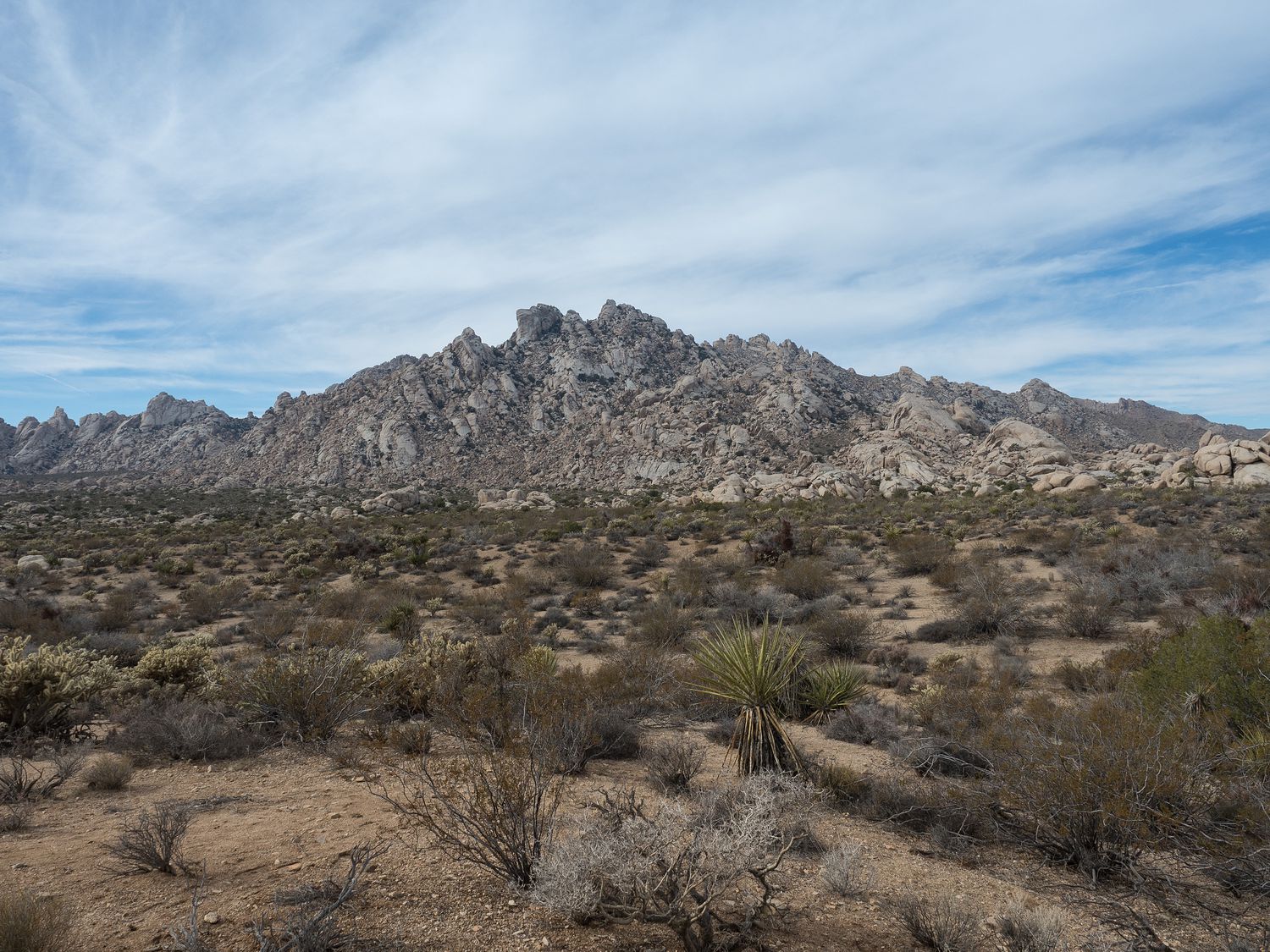
Our other stop was at Granite Point, which is a strange-looking mountain range. Dad kept joking that it looked like aliens had just dropped the piles of rock out of ships while they were flying overhead. That’s not really how it worked, of course. Like many a mountain range before and after it, the Granite Mountains were created by volcanic activity. According to Wikipedia, they were “formed by the slow cooling and solidification of molten magma bodies that developed above sinking slabs of oceanic crust overridden by the edge of the continent.”
Since our next stop was in Joshua Tree National Park, and it was already afternoon, we only had one real city we could stop in for lunch: Twenty-Nine Palms. They actually had way more than 29 palm trees. Mark wondered aloud where the name came from. I really couldn’t say. maybe it was an oasis with 29 trees originally? Who knows. It’s an ugly city, regardless. The desert rarely makes for pretty cities, even big ones. Twenty-Nine Palms isn’t particularly large, so there’s really nothing to recommend it aside from its proximity to two lovely parks.
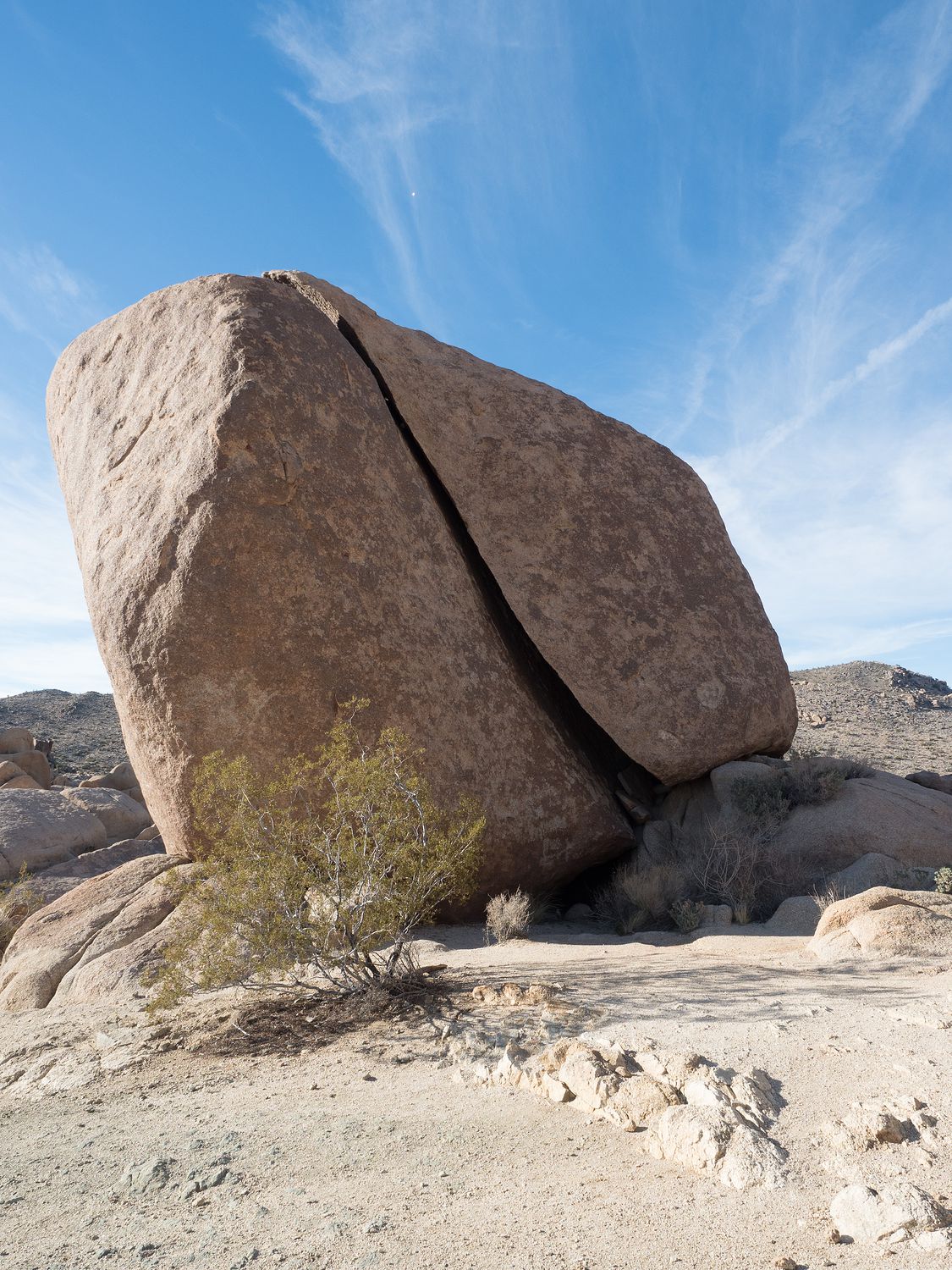
We had lunch at Pizza Hut, which I think Mom has been craving for the entirety of the trip. She’s suggested it more than once. There’s also a Joshua Tree National Park visitor center in Twenty-Nine Palms, which Mark and I hadn’t visited before. We stopped at a different one on our previous trip to Joshua Tree.
There’s not much at their visitor center, honestly, which is sort of disappointing compared to the cooler one in Mojave National Preserve. You’d think the better-funded national park would have a better visitor center. I guess they went with quantity over quality, or something.
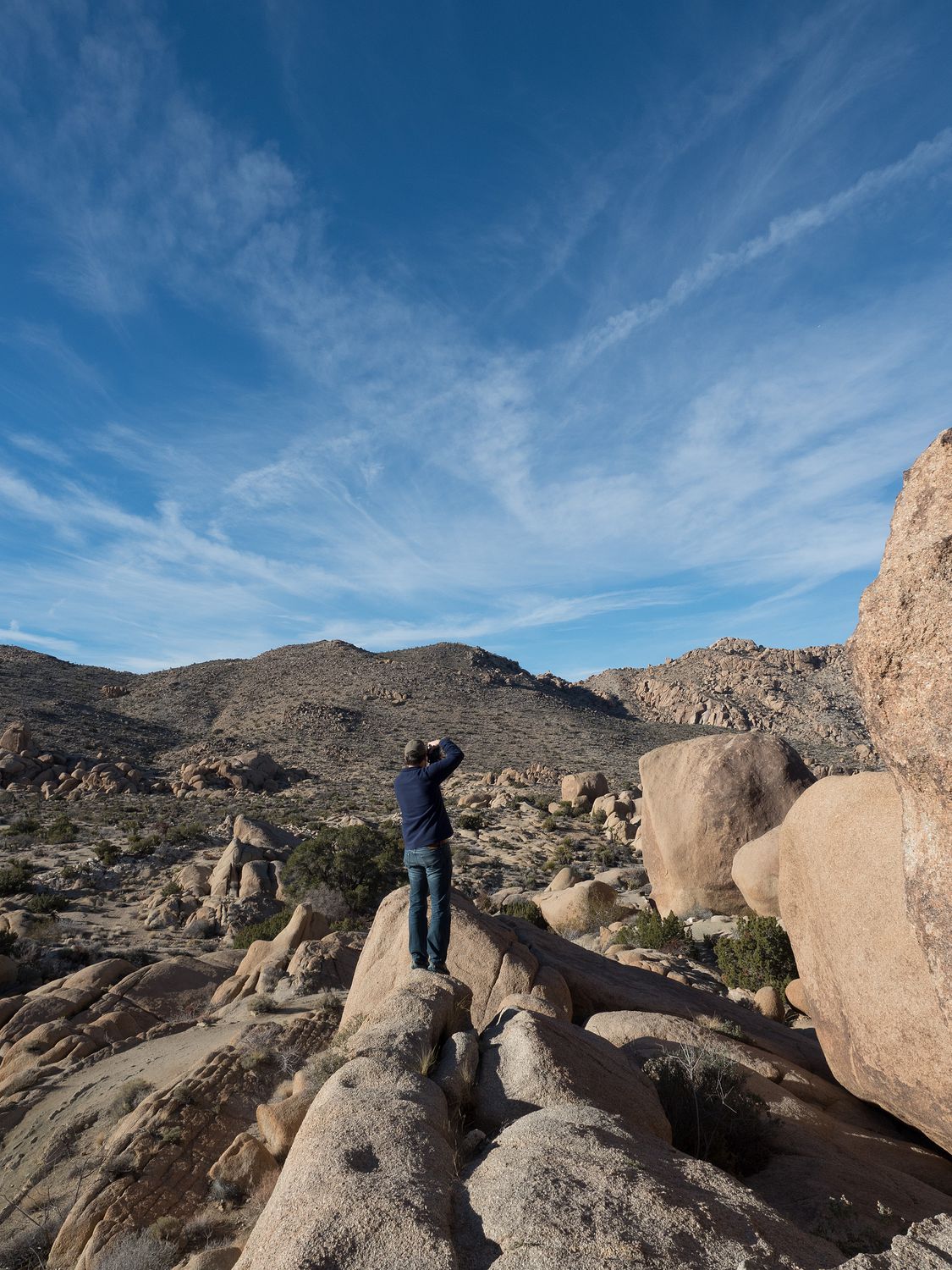
Most of Joshua Tree National Park’s sights were’t on the road we were planning to take through the park, so we had to make a side trip across the park to see the things we were missing. One part of the park, the part we originally planned to drive past, is in the Colorado Desert. The more scenic part, which we were detouring to see, was still inside the Mojave. That’s where all of the Joshua Trees are. The Joshua Trees were cool, of course, but since we’d seen so many of those already, we weren’t particularly impressed by those anymore.
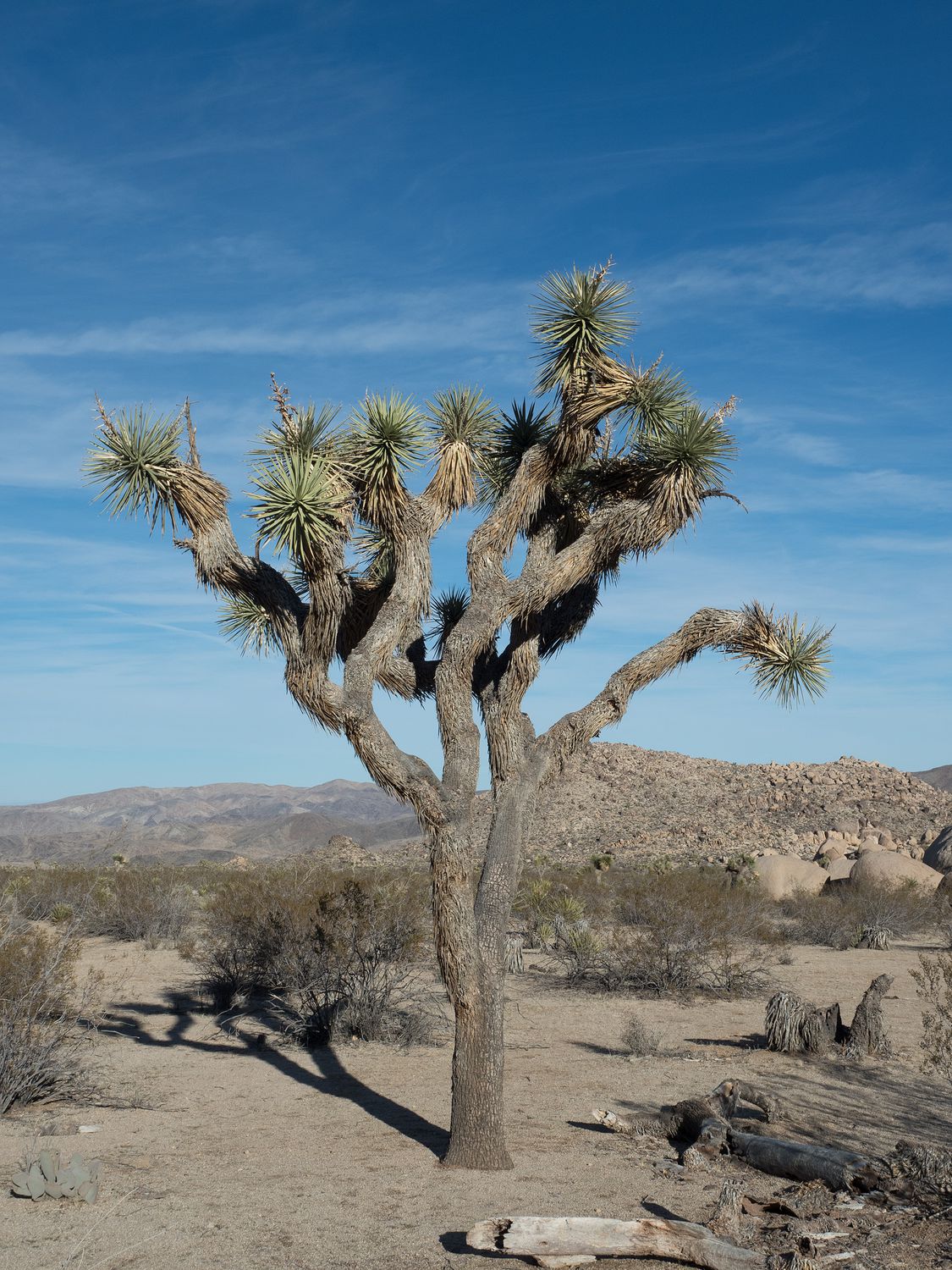
What we hadn’t seen today was the huge piles of loose rock and boulders that make up most of the park’s geological features. These, too, were made by cooling magma. Its a bit weird to think of all of the volcanic activity that shaped our continent that’s simply gone now. Not that I’m not glad we don’t live in constant fear of volcanoes, of course. I’m not sure I ever want to get an order to evacuate my home because of lava flow. Hawaii, you seem nice, but you’re not for me.
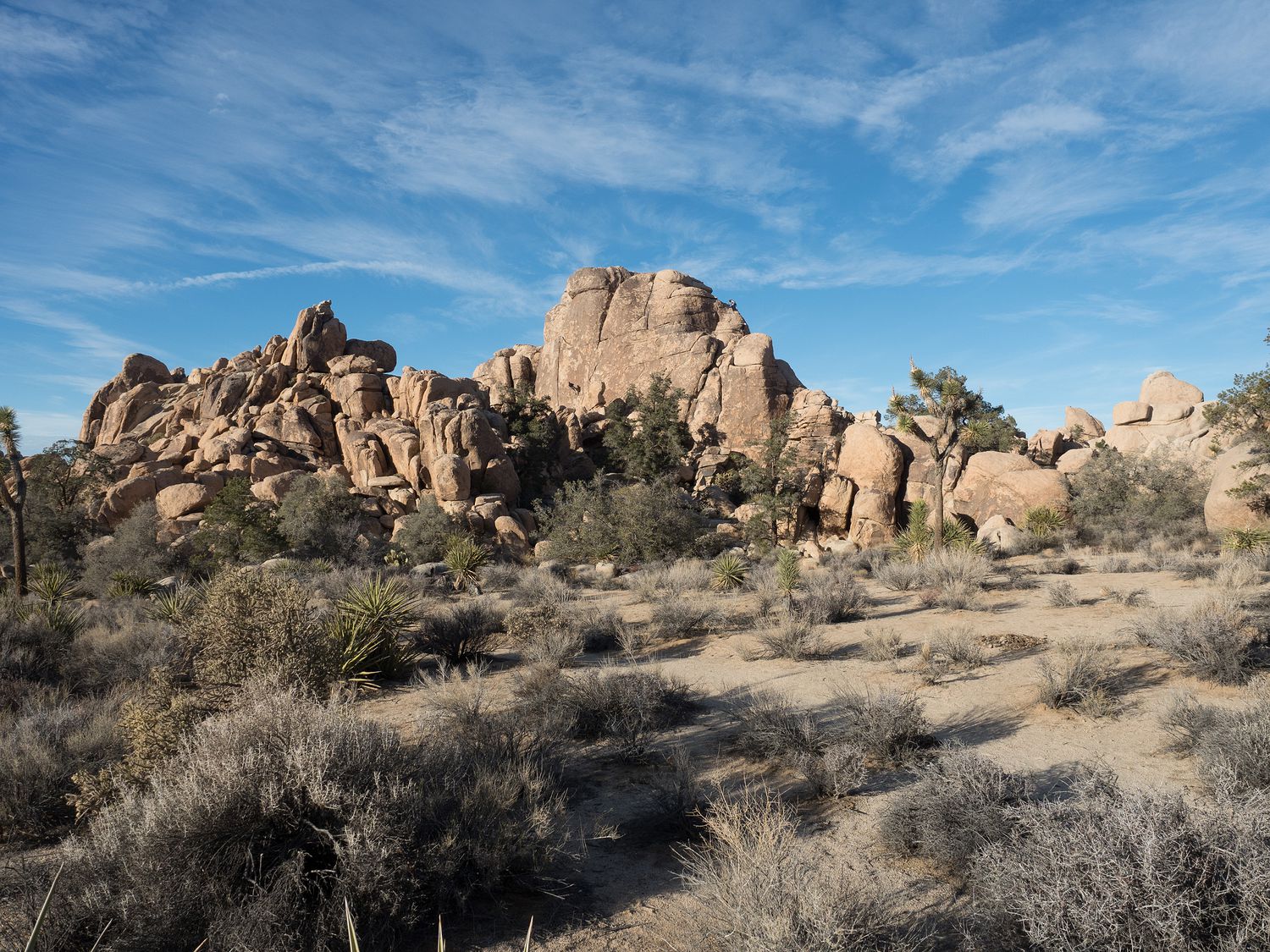
The map the park gives you of Joshua Tree isn’t particularly good, in my opinion. Many of the little pull outs are not marked at all. Most of the markers are campgrounds, which isn’t particularly helpful if you are just touring the park. We didn’t see map markers for Split Rock, Live Oak, Skull Rock, or really any of the other cool little pull offs. Those should totally be on the map. The things they did mark, like some of the campgrounds, didn’t have anything at all to see. It was confusing. They need a redo.
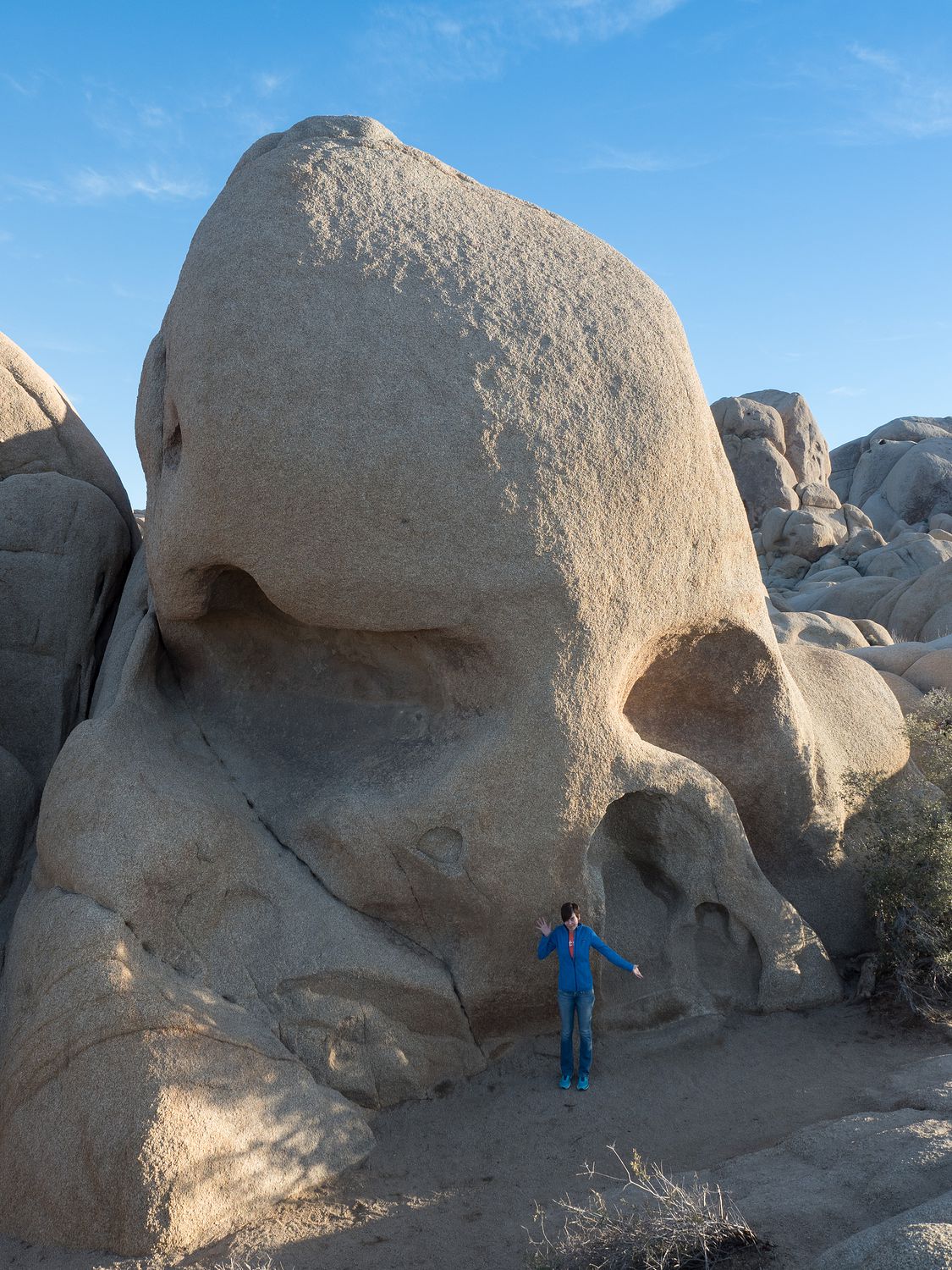
We toured several of the little pullouts, like I mentioned before. We only drove out to Hidden Valley, which is actually pretty cool. It used to be a closed valley, surrounded by rocky promontories. Sometime after the park was discovered, a man blasted an opening into the valley and corralled cattle inside.
It’s a neat little walk up to see the valley, and then a one-mile loop trail circles around it. The path up is a set of stone stairs cut into the rock that weave back and forth up the little rock hill until the reach the valley beyond. It was a really popular trail, too. We didn’t go all the way, since we didn’t have time, but what we did get to see was was interesting. I can imagine the canyon was a great place to keep cows without bothering to build a fence.
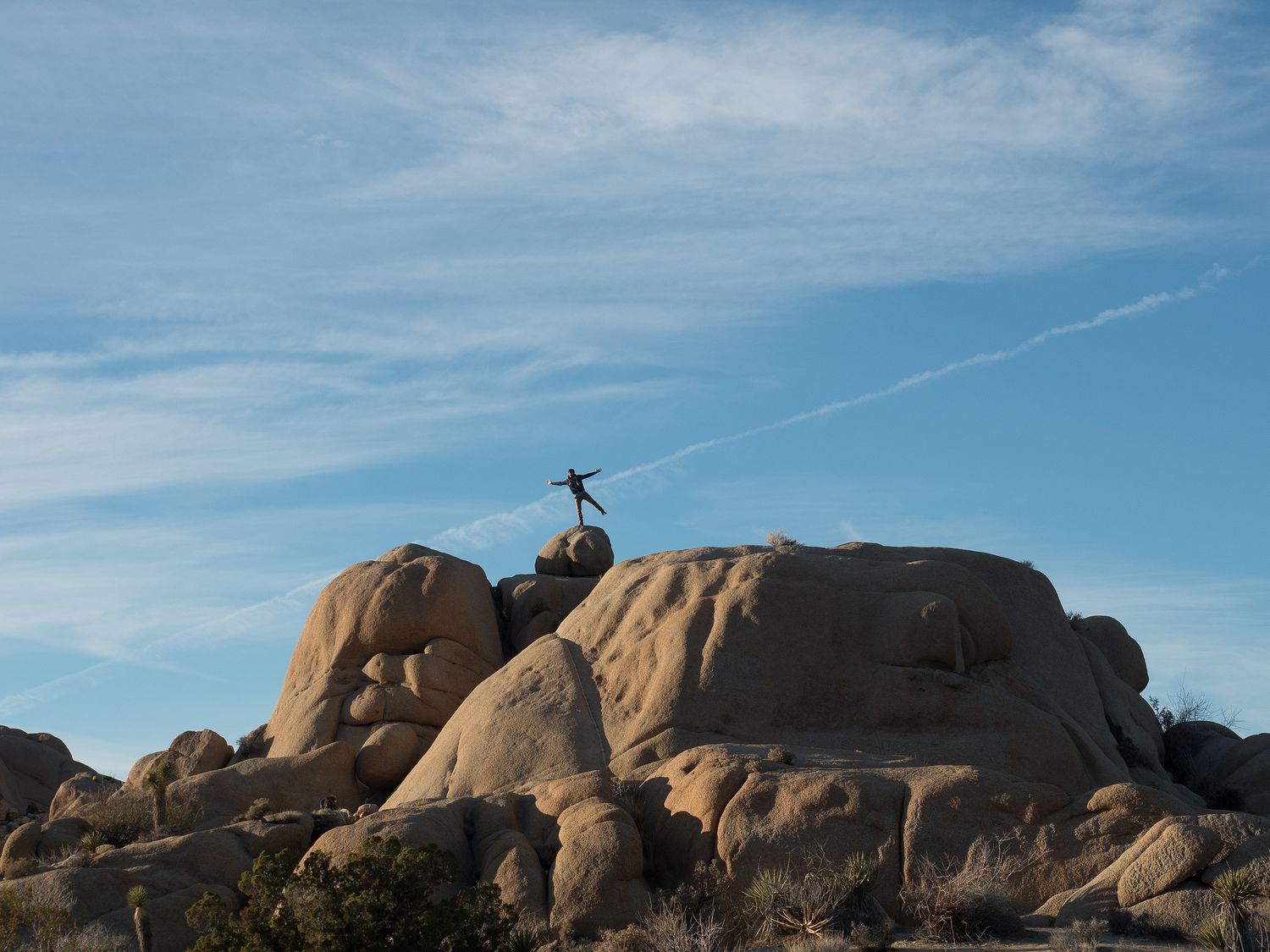
We really liked Skull Rock, which was one of our last stops. We’d skipped it on our first drive past, since it was so full, so it was nearing dusk when we finally did see it. Children were sitting in the eye holes when we arrived, which is amusing. They looked like little blonde eyes. Once they’d finished up, we got our photos. In case it isn’t clear, Skull Rock just kinda… looks like a skull.
Opposite us, on a nearby cliff, stood a fellow standing on a big boulder. He was up there all alone, standing in funny positions for his friends taking pictures below. In particular, he posed on one leg, which made me nervous. I hate heights, and watching that fool dance around up there gave me a little anxiety.
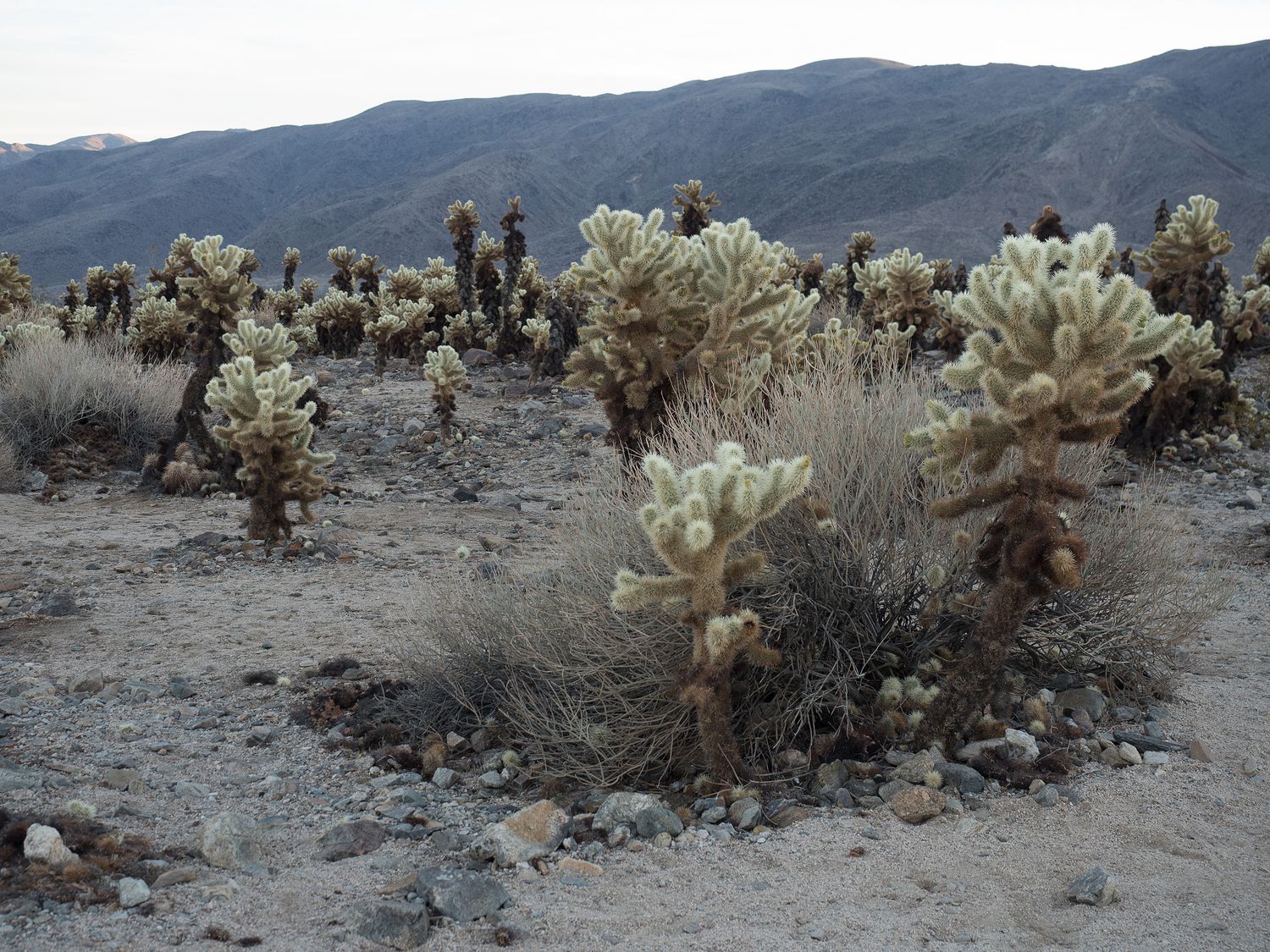
From there, we drove on into the Colorado Desert section of the park, where we didn’t stop to see nearly as many things. The rest of the park was certainly more interesting. The best stop we made in that section of the park took us to the Cholla Cactus Garden. They are weird-looking little cacti, and they were everywhere at the stop. According to the sign, the stop is even better in the spring, when the desert is blooming with flowers.
The rest of our trip through the park was uneventful, and we made it to our hotel in Indio in good time.
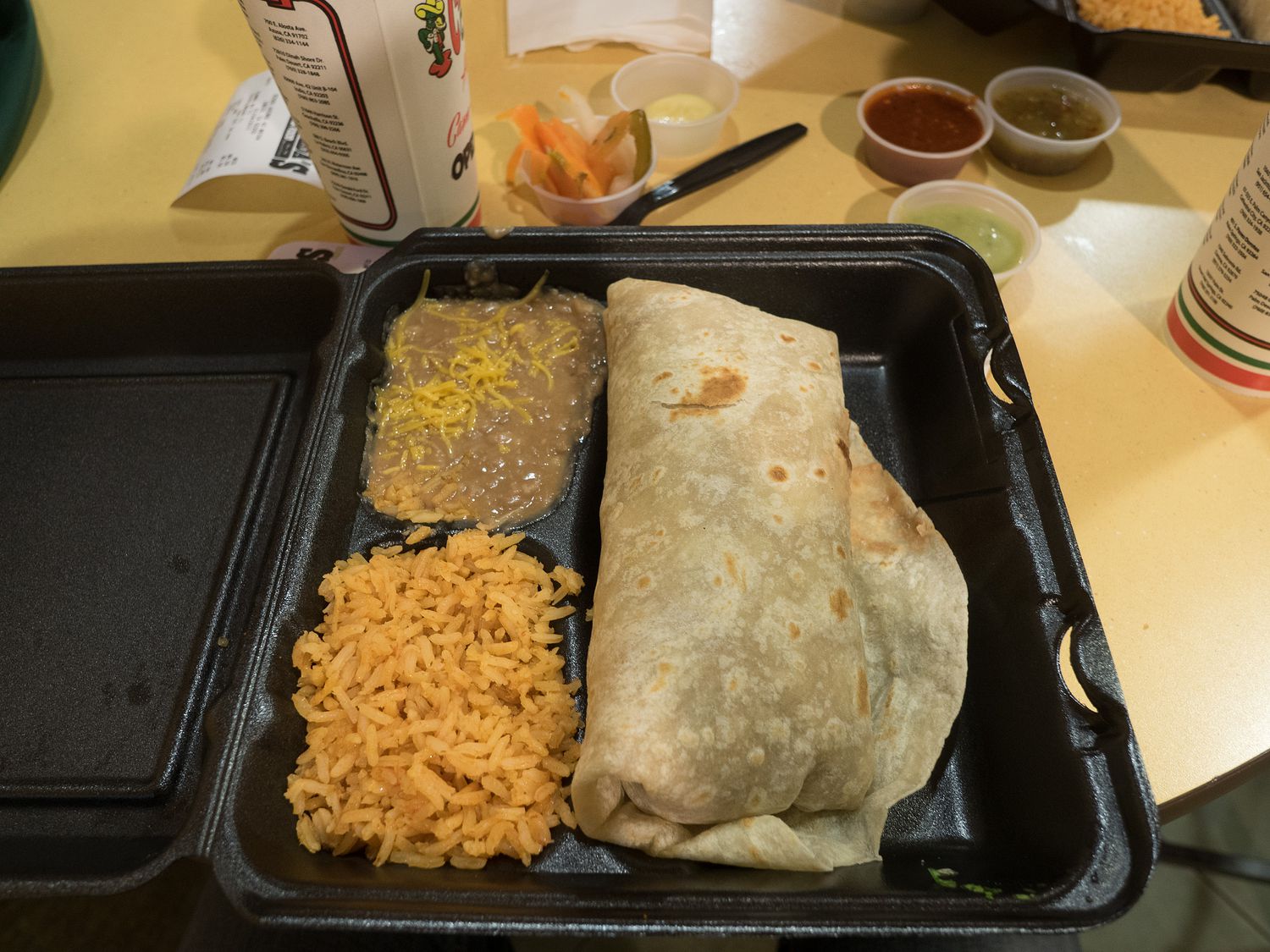
For dinner, we went to a local California taqueria. I’d never been to one, but Mark told me the menu would be overwhelming, and he was right. They had so very many things to try. In the end, Mark and I had veggie burritos, Dad had beef tacos, and Mom just got chips and guacamole. She was still full from her pizza lunch. It was delicious. A+. I would definitely return for more. Their salsa was fantastic, too.
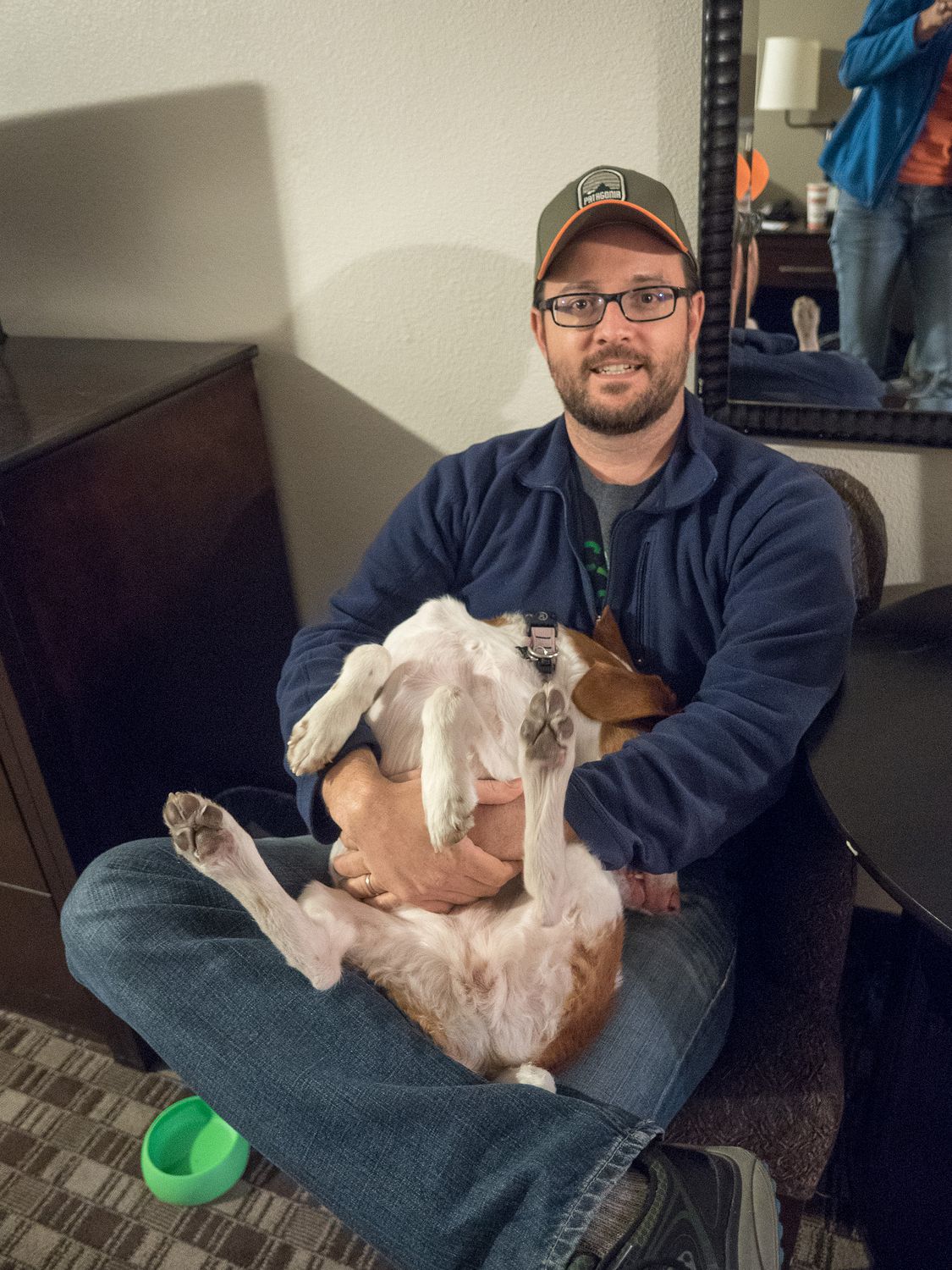
Tomorrow we will go for a run and hit of few of the sights on our way out of southern California and back into Arizona. We have a few more stops to make, but we’re on the return trip home, so the days are getting longer and the sights are getting fewer and father between.
– Trip Total : 2,366 miles –
